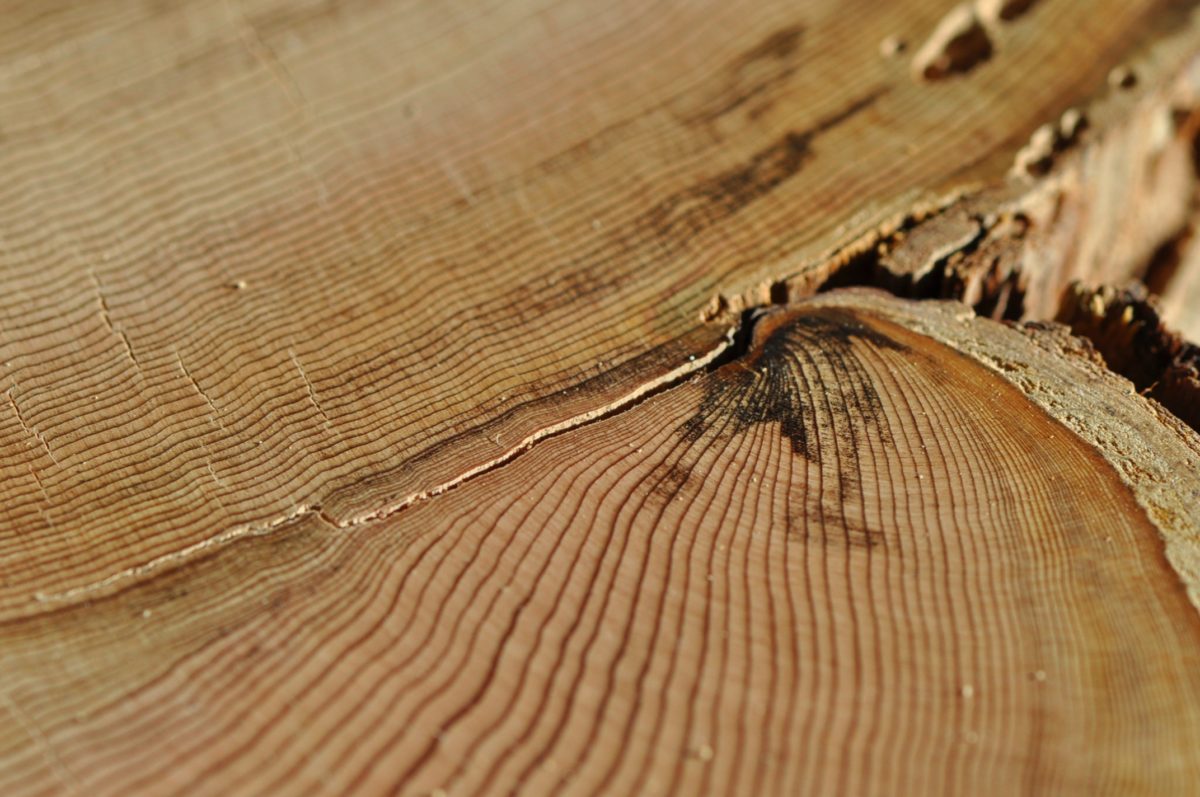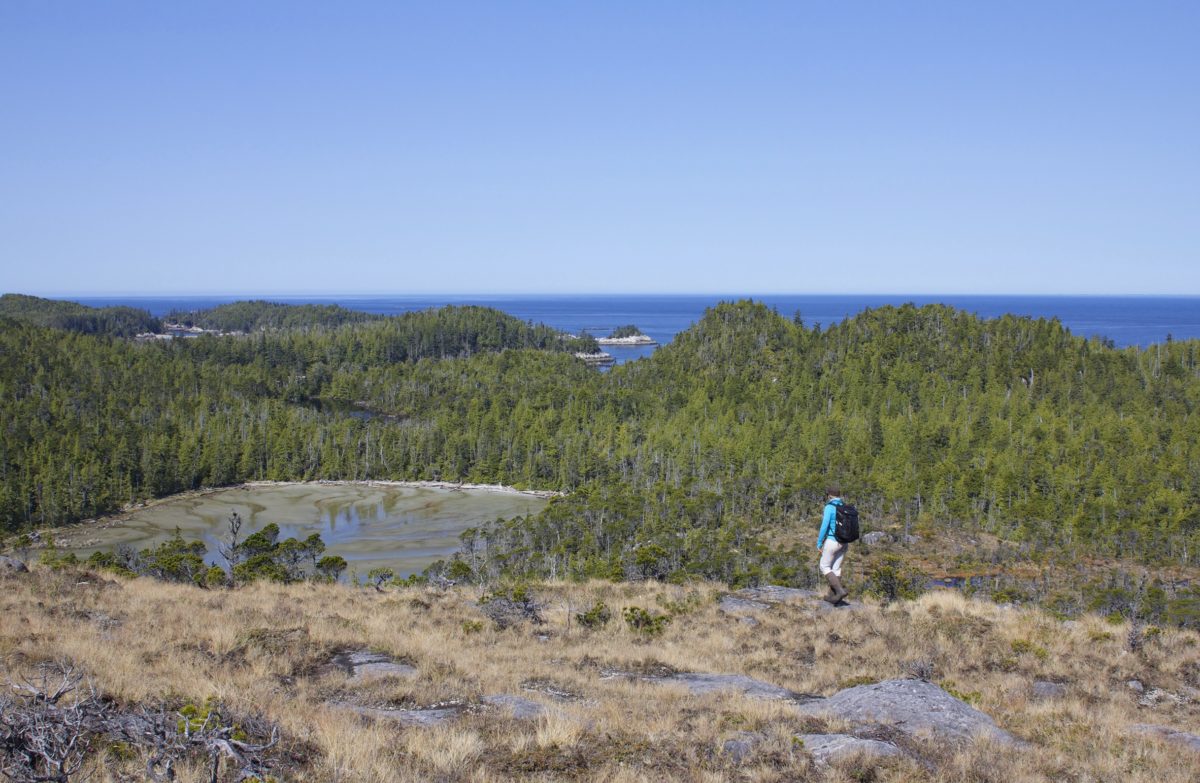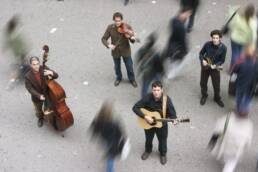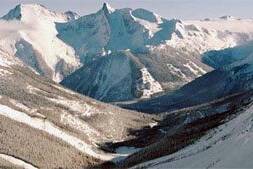En route to her PH.D., a formidable researcher has made surprising discoveries about how first nations managed forest fires, and in doing so, answered the burning questions in a sodden land. Story and photos by Kira Hoffman.
It was raining sideways on the day I fell in love with fire. I was in my first year of graduate research in Environmental Studies at the University of Victoria, British Columbia. I had travelled north for a few weeks of fieldwork at the Hakai Institute, a fishing-lodge-turned-research station on Calvert Island.
I’d planned to study soil microbes in coastal, blanket bogs, but as I struggled through knee-deep, sphagnum muck, with water breeching my gumboots, something intriguing caught my eye—a tree that burned a long time ago. Fire in such a soggy place seemed almost impossible, and as a former forest service firefighter, and closet pyrophile, I needed to know more.

The next day, instead of sampling soils, I staked out the burned tree and looked for more evidence of the fire. Though the rain was coming down in sheets, I convinced my research assistant that it was a worthwhile task, and we spent the whole day slogging through brush-heavy forest trying to find the burn’s perimeter. As dusk settled, I knew I’d stumbled upon an unexpected discovery—a rainforest that had burned not just once, but multiple times.
What were all these burned trees doing in one of the wettest places in North America? Was it lightning? Humans? When did it happen? I wanted to find the answers, and, for the next five years, I devoted my PhD to figuring it out.
The forests encountered by early European explorers were not untouched wilderness, but carefully tended landscapes.
To understand the history of the forest, I sampled 4,000 trees with a hand-driven auger and extracted cylindrical cores, which I used to determine the age of the trees by counting the rings. The heat of a fire can leave scars embedded beneath the bark that are used to date the exact year and season of the event. Fire is thought to be rare on the rainy West Coast, but, in fact, the opposite is true—it’s been part of this landscape for millennia. Unlike most places in BC, where lightning and humans start fires in near equal proportions, it’s likely the fire in this region was entirely of human origin. First Nations may have used fire to clear land around their near-shore homes, encourage the growth of grass for wild game, and open dense forests to increase the productivity of berry patches. These were controlled, slow-moving, ground fires that left many trees alive and kept the forest floor clear of brush—not the raging infernos we see on the news.

Although evidence exists of First Nations using fire in nearby areas, up until my encounter with the burned tree, fire had never been documented on the outer islands of the central coast. Further research detailed 16 fires over a 600-year period. Although this may not seem like much, I discovered that fires occurred 25 times more frequently than the previous estimates of only once every few thousand years. Despite a warming climate, fire activity ceased entirely when First Nations left the area at the end of the 19th century.
The effects of First Nations’ forest management are subtle and not easily evident. It took years of walking through the forest—and learning from many teachers about traditional, resource-management practices—before I began to see the legacies. Now, I can easily identify trees that were left standing dead behind village sites through a process called girdling—where a ring of bark was removed to kill the tree above the ring, as a supply of dry firewood in the wet, winter months. When I come across dense patches of huckleberries, I imagine the area being carefully burned every few years and cared for like a garden.
These were controlled, slow-moving ground fires that left many trees alive and kept the forest floor clear of brush, not the raging infernos we see on the news.
BC’s old-growth, coastal rainforests are often spoken of as pristine and untouched places—and at first glance, they may appear that way. In reality, the forests encountered by early European explorers were not untouched wilderness, but carefully tended landscapes. My research has given me a deep respect for how people managed their land without degrading it, in contrast to BC’s resource industries over the last 150 years. I’ve also gained respect for the simple act of fire-making.
On my most recent trip to Hakai, a friend tried to teach me how to light a fire the traditional way. Sweat poured down my face as I gripped a bow drill made of nettle and spruce, and spun the drill into a nest of lichen and cedar bark. After half an hour of work, the tinder finally smoked. Ten minutes later, my hands were full of blisters and I still hadn’t produced a flame. I gave up exhausted—and with a new admiration for people who made fire without lighters and matches.
Scientists are just beginning to discover what First Nations have known since time immemorial—and the hope is that it can help us take better care of this beautiful coast, and create a deeper understanding of this world.
Related Stories
STAND movie hits BC in early May
From our Friends Anthony Bonello of b4apres Media, and Nicolas Teichrob, photographer comes the cinematic premier of…
Creaking Tree String Quartet touring BC
Two time Juno nominees, The Creaking Tree String Quartet are coming to British Columbia to promote there fourth Album.…
Cool New Video by Nelson BC’s Best Western Hotel
The world of the webisode gets funner by the day. This new piece by the local Nelson family that runs the town's Best…
New BC Bike Race Movie Lands Today
BC Bike Race has released its third feature film, "The Journey," documenting the 2017 event. Watch it below. Director,…







